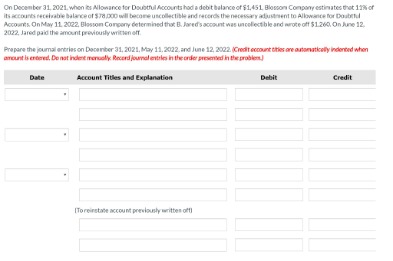For example, a company with a $5 million inventory that takes seven months to sell will be considered less profitable than a company with a $2 million inventory that is sold within two months. Companies must report their revenues in the income statement, which is accessible to shareholders. Furthermore, calculating turnover ratios and including them in the financial statements helps shareholders understand them better. Knowing the total revenue earned for the year allows companies to plan for and allocate money for the next financial period.

Revenue is the money companies earn by selling their products and services, while turnover refers to the number of times businesses make assets or burn through them. Thus, revenue affects a company’s profitability, while turnover affects its efficiency. The other differences are the effect of the two on business, the types of turnover and revenue, the calculation formulas, and reporting. Keep in mind there are some other definitions of annual turnover that don’t refer directly to sales. For example, annual inventory turnover measures how many times inventory is replaced over the course of a year. Annual employee turnover is a measure of how many employees leave a business in a year.
What Is Portfolio Turnover?
Employee turnover, or employee turnover rate, is the measurement of the number of employees who leave an organization during a specified time period, typically one year. While an organization usually measures the total number of employees who leave, turnover can also apply to subcategories within an organization like individual departments or demographic groups. Turnover is the rate at which an asset is replaced during a measurement period. The term is most commonly used in accounting, and refers primarily to the turnover of accounts receivable, inventory, and accounts payable – which are the components of working capital. A high level of receivables and inventory turnover is considered to be good, since a business is avoiding old receivables and the risk of obsolete inventory.

Annual turnover usually refers to the total income made by a business over a year. Businesses must calculate their turnover ratios and revenue during every financial year to ascertain their financial health. Thus, it does not include gains from financial or other activities, such as interest income, gains on the sale of fixed assets, or the receipt of payments related to insurance claims. For example, if you have an average of 140 employees working during a month’s time and 26 employees leave, your turnover rate would be around 18.6 percent. The reciprocal of the inventory turnover ratio (1/inventory turnover) is the days sales of inventory (DSI).
Translations of turnover
Both of these accounts require a large cash investment, and it is important to measure how quickly a business collects cash. That said, with accounting software like QuickBooks Online, you can automatically record all sales transactions in one place so you always have an overview of your revenue. You can also generate a customised report in a few clicks to review your annual turnover whenever you need to. From cash flow to profitability, there are lots of metrics that can provide a picture of the financial health of your business. Together, they all help you understand how you’re tracking, what’s working and where there’s room for improvement. Both turnover and revenue are vital for companies and organizations because they measure and indicate performance for the financial year.
What is the meaning of this turnover?
: the amount received in sales for a stated period. (2) : the ratio of sales for a stated period to average inventory. (3) : a cycle of purchase, sale, and replacement of a stock of goods.
The differences between turnover and revenue are many and complex, but essential for organizations to survive. All companies strive to increase and maximize their revenues, and comparing their performance year on year helps determine growth and improvement. It is essential to understand and calculate revenue since it helps companies determine their growth and sustainability. Turnover Definition It’s also a performance metric for comparing the current financial year with previous periods. Therefore, it’s critical to track all revenue flowing through the company and recognize it correctly. The inventory turnover formula, which is stated as the cost of goods sold (COGS) divided by average inventory, is similar to the accounts receivable formula.
More from Merriam-Webster on turnover
For example, if credit sales for the month total $300,000 and the account receivable balance is $50,000, then the turnover rate is six. The goal is to maximize sales, minimize the receivable balance, and generate a large turnover rate. Divide the sum total of the number of employees that leave within a specific period of time (month, quarter, year, etc.) by the average number of employees that work within the selected time frame.
- Investors use the asset turnover ratio to compare similar companies in the same sector or group.
- Divide the sum total of the number of employees that leave within a specific period of time (month, quarter, year, etc.) by the average number of employees that work within the selected time frame.
- Both of these accounts require a large cash investment, and it is important to measure how quickly a business collects cash.
- Keep in mind there are some other definitions of annual turnover that don’t refer directly to sales.
- The concept is useful for tracking sales levels on a trend line through multiple measurement periods in order to spot meaningful changes in activity levels.
Sign up to a free course to learn the fundamental concepts of accounting and financial management so that you feel more confident in running your business. As long as your accounting records are up to date, calculating annual turnover is as straightforward as adding together your total sales for the year. Annual turnover is an important indicator of your business’s performance because it tells you plainly and simply how much money you’re bringing in from selling your goods or services. For the sake of this article though, we’ll be focusing on the most common definition of annual turnover – yearly income from sales. Investors use the asset turnover ratio to compare similar companies in the same sector or group.
The turnover concept also applies to employees, where a high level of turnover means that employees are constantly leaving a company, and must be replaced. A low level of employee turnover either implies that employees are content in their positions, or that the economy is so bad that they feel they must stay where they are. Employee turnover tends to increase during an economic upswing, when employees believe they have a better chance of finding a new job. Voluntary turnover is any instance in which an employee actively chooses to leave. This can happen as a result of better job opportunities elsewhere, conflict within the workplace, disengagement, and more. And remember, if you are calculating turnover within a single team or department, turnover does not have to mean employees who leave the organization—just the group you’re analyzing.
Is profit the same as turnover?
What is the difference between turnover and profit? Profit refers to a company's total revenues minus its expenses. By contrast, turnover can refer to how quickly a company either has sold its inventory or is collecting payments compared with sales over a specific time period.
Revenue refers to the money companies earn by selling products or services for a price, whereas turnover is the number of times companies make or burn through assets. In reality, turnover affects the efficiency of companies, while revenue affects profitability. The inventory turnover, also known as sales turnover, helps investors determine the level of risk that they will face if providing operating capital to a company.
A low level of payables turnover is considered to be good, since this implies that a company is taking a long time to pay its suppliers, which equates to a lengthy interest-free loan. Accounts receivable represents the total dollar amount of unpaid customer invoices at any point in time. Assuming that credit sales are sales not immediately paid in cash, the accounts receivable turnover formula is credit sales divided by average accounts receivable. The average accounts receivable is simply the average of the beginning and ending accounts receivable balances for a particular time period, such as a month or year.
White Paper: Low Pay Causing State’s Recruitment and Retention … – SEIU 503
White Paper: Low Pay Causing State’s Recruitment and Retention ….
Posted: Thu, 25 May 2023 21:31:33 GMT [source]
Learn the real organizational cost of turnover, its leading drivers, and the breakthrough techniques today’s leading organizations leverage to engage and retain top talent. You can find out more about other types of business turnover in our guide for small business https://kelleysbookkeeping.com/gross-profit-vs-net-income/ owners. Annual turnover is just one of the key markers you can use to get a good idea of how well your business is performing each year. Improve your vocabulary with English Vocabulary in Use from Cambridge.Learn words you need to communicate with confidence.
A 20% portfolio turnover ratio could be interpreted to mean that the value of the trades represented one-fifth of the assets in the fund. Turnover ratios calculate how quickly a business collects cash from its accounts receivable and inventory investments. These ratios are used by fundamental analysts and investors to determine if a company is deemed a good investment. For example, if your net profit is low in comparison to your annual turnover, it might be time to find ways to lower your Cost of Goods Solds (COGS) or other business expenses. Or, if your annual turnover is solid but you don’t have much cash on hand, you might look at strategies to improve your cash flow.
- Revenue is the money companies earn by selling their products and services, while turnover refers to the number of times businesses make assets or burn through them.
- Assuming that credit sales are sales not immediately paid in cash, the accounts receivable turnover formula is credit sales divided by average accounts receivable.
- While an organization usually measures the total number of employees who leave, turnover can also apply to subcategories within an organization like individual departments or demographic groups.
- Sales turnover is the total amount of revenue generated by a business during the calculation period.
- Both turnover and revenue are vital for companies and organizations because they measure and indicate performance for the financial year.
- Together, they all help you understand how you’re tracking, what’s working and where there’s room for improvement.
- Improve your vocabulary with English Vocabulary in Use from Cambridge.Learn words you need to communicate with confidence.
